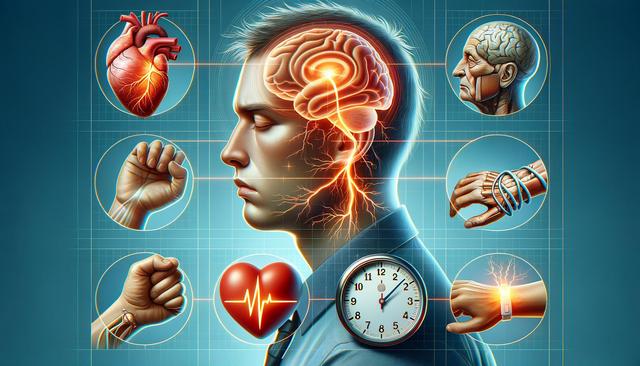
Recognizing the Early Warning Signs of Stroke
Understanding What a Stroke Is
A stroke occurs when blood flow to a part of the brain is interrupted or reduced, preventing brain tissue from receiving oxygen and nutrients. Within minutes, brain cells begin to die. There are two main types of stroke: ischemic, caused by a blockage in an artery, and hemorrhagic, caused by a burst blood vessel. A third type, known as a transient ischemic attack (TIA) or mini-stroke, involves a brief interruption that often resolves on its own but serves as a critical warning sign for future strokes.
Recognizing a stroke quickly can be lifesaving. The faster a person receives medical attention, the greater the chances of minimizing brain damage and complications. This makes awareness of early signs not just important, but potentially life-preserving. Understanding the condition is the first step toward effective prevention and response.
Common Physical and Sensory Indicators
One of the most common initial signs of a stroke is sudden numbness or weakness, particularly on one side of the body. This can affect the face, arm, or leg. If one side of the face droops or if a person cannot raise both arms evenly, these are strong indicators of a possible stroke.
Other sensory changes may include:
- Blurred or blackened vision in one or both eyes
- Sudden difficulty walking or loss of balance
- Unexplained dizziness or coordination problems
These symptoms may seem minor at first but should not be ignored. Even a brief episode warrants immediate medical evaluation, as it could signal a more severe stroke in progress or an impending one.
Speech and Cognitive Warning Signs
Strokes often impair a person’s ability to speak, understand, or process language. These cognitive disruptions can present suddenly and may include:
- Slurred or garbled speech
- Confusion or inability to understand spoken language
- Difficulty repeating simple phrases
If someone suddenly becomes incoherent or struggles to find the right words, it’s essential to consider a stroke as a possible cause. Asking the person to repeat a simple sentence can help identify problems. If they are unable to do so clearly and correctly, immediate action should be taken.
Behavioral and Emotional Changes
While physical and speech symptoms are commonly recognized, behavioral and emotional changes are also important indicators. Some individuals may display unusual irritability, confusion, or even a noticeable change in personality. These shifts can occur rapidly and may be accompanied by a general sense of disorientation or agitation.
Emotional signs to watch for include:
- Sudden anxiety or fear without a clear cause
- Impaired judgment or decision-making
- Loss of awareness of one’s surroundings
Though often less emphasized, these behavioral changes can be key clues, especially when combined with other symptoms. They can also complicate a person’s ability to seek help independently, making it vital for those nearby to act quickly.
What to Do in Case of a Stroke
If you suspect someone is experiencing a stroke, time is critical. The acronym FAST can help you remember what to check for and how to respond:
- Face: Ask the person to smile. Does one side droop?
- Arms: Ask them to raise both arms. Is one arm drifting downward?
- Speech: Ask them to repeat a simple phrase. Is their speech slurred or strange?
- Time: If any of these signs are present, call emergency services immediately.
Do not attempt to diagnose or wait for symptoms to improve. Even if the symptoms disappear, it could have been a TIA, which is a strong warning sign. Seeking immediate medical care improves the chances of survival and can reduce long-term complications significantly.
Conclusion
Recognizing the early warning signs of stroke can make a crucial difference in outcomes. Whether it’s physical symptoms like sudden numbness or speech difficulties, or more subtle signs such as confusion and emotional changes, acting quickly is essential. Staying informed and vigilant empowers individuals and communities to respond effectively, potentially saving lives and improving recovery prospects. If you or someone you know exhibits any of these symptoms, don’t hesitate—seek medical attention right away.


